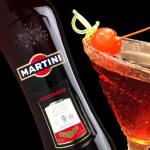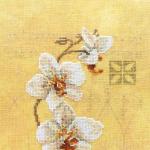The administrative center for the province of Trentino is TRENTO, for the province of Alto Adige is BOLZANO (BOTSEN).
Internet address: http://www.regione.taa.it
Provinces: Bolzano/Bozen, Trento
Apples, for example. Either the green cover of the valleys, or the blinding whiteness of the snow-capped mountain peaks, or the peace of the lakes - this is all Trentino-Alto Adige (South Tyrol) - An area, the mention of which involuntarily evokes peace, virgin purity of nature and its beauty. This "calming", but not at all boring image, found its fortune through tourism. Anyone who has a rest on Lake Garda, in the National Park dello Stelvio, at the foot of the amazing beauty of the Dolomites or in another equally green valley, goes skiing to the resort of Madonna di Campiglio or San Martino di Castrozza, will find exactly what What he is looking for: beautiful nature, pleasant hospitality, excellent cuisine, and will not leave disappointed.
The championship in terms of population is held by Lombardy by a wide margin - almost 10 million people (this is 1/6 of the population of Italy), in the smallest Valle d'Aosta there are only about 126 thousand people. Geographically, two areas can be distinguished: Sicily and Piedmont - more than 25 thousand km². The most densely populated region is Campania - more than 400 people / km². And most of all communes in the same Lombardy - 1544.
Region LOMBARDY (Lombardia)
The administrative center is MILAN.
Internet address: http://www.regione.lombardia.it
Provinces: Bergamo, Brescia, Como, Cremona, Lecco, Lodi, Mantua, Milan, Monza and Brianza, Pavia, Sondrio, Varese
It is the most developed, richest and most populous Region of Italy. That is why it is one of the most unexpected surprises for the tourist who arrives there, who does not know much about its natural, historical, archaeological and artistic heritage.
In Italian, the accent in the name of the province falls on the penultimate syllable: "Lombard" ia.
Take Milan, a major industrial and commercial center. Everything that is advanced and modern in the world has a place here: from technological innovations to fashion, from advertising to design, from lifestyle to political "experiments". It is Milan that determines the main trends in the life of modern Italy. The rest of Lombardy is dominated by marvelous landscapes: lakes, rivers, hills, thermal clinics, mountains, parks, as well as monuments of architecture and art in many cities of the region. Many have a lot to discover.
Piedmont Region
AOSTA administrative center
Internet address: http://www.regione.vda.it
Provinces: none
We can say about this Area that it is located vertically. And not only in terms of relief due to the presence of a large number of mountain peaks surrounding it, among which Mont Blanc is the highest mountain in Western Europe (4807 m) - but because of the amazing accumulation in such a small area of \u200b\u200bmonuments.
Aosta itself is also rich in history - the administrative center and the only province of the region. The traces of the ancient Augusta Pretoria (Latin name of Aosta) are clearly visible, such as the Arch of the Emperor Augustus (25th century BC), and the remains of the Roman Theatre. The nature of the valley is beautiful - from the impressive heights of Mont Blanc to the enchanting severity of the landscape of Cervino (height 4478 m) another mountain peak, Gran Paradiso, located in the center of the natural park of the same name, spread over an area of over 200,000 hectares.
Region Liguria (Liguria)
Porticos that protect from the weather and give shade while walking through the historical center of Bologna and an endless, colorful scattering of umbrellas on the sun-drenched beaches of Romagna. On the one hand, Emilia-Romagna is Bologna - a modern, dynamic, prosperous city, still able to maintain a "human face", on the other, a coastline stretching for tens of kilometers filled with tourists who are attracted by a combination of three things - "sun, sea, entertainment". One of the most economically prosperous regions of Italy, Emilia-Romagna is a truly gigantic "casket" filled with gems of architecture and masterpieces of painting. It is known for its ancient universities and modern centers for training in culture and the arts.
Here we wish you bon appetit. Where is the appetite? And you enter any restaurant in Emilia or Romagna, and you will immediately understand everything.
Tuscany region
The modern Italian language originates from the literature of the greats Dante, Petrarch and Boccaccio. Could there be an even deeper connection, a more noble and high tribute on the part of a whole people towards Tuscany as a single language? But the debtor of Tuscany for its exceptional contribution to European culture is the whole of Europe, which has strong and long-standing ties with it. It was in Tuscany that the majestic Age of Humanism and Renaissance was born and developed in the XIII-XV centuries, which radically updated the culture and art of that time, leaving an indelible mark on the pan-European civilization. The great geniuses of that era worked in Florence - Leonardo da Vinci, Michelangelo Buonaroti, Filippo Brunelleschi.
Marche region
Perhaps the charm of these places, perhaps the bewitching atmosphere everywhere you go, but sooner or later, everyone who visits Umbria comes to the conclusion that the great, meek, gentle, poetic, filled with holy joy and complacency, Saint Francis could only be born here, in these parts, where nature is always in bloom, radiant and charming.
Region Lazio (Lazio)
Region of Abruzzo (Abruzzo)
Administrative center of AQUILA
Internet address: http://www.regione.abruzzo.it
Provinces: Chieti, L'Aquila, Pescara, Teramo
Abruzzo holds a record - 30% of its territory is protected by environmental laws. No other area in Europe can boast the same. It is no coincidence that Abruzzo is called the “region of parks”. There are three National Parks, one Regional Park, dozens of territories and nature reserves protected by special laws.
MOLIZE area (Molise)
Administrative center of CAMPOBASSO.
Internet address: http://www.regione.molise.it
Provinces: Campobasso, Isernia
Let's take a chance and come up with such a slogan for this small, charming area in the South of the Adriatic: "Visit it before it becomes fashionable". Indeed, it is not difficult to predict the massive influx of tourists to these parts, where everything keeps the “flavor” of ancient times: from wonderful landscapes to folk traditions, from gastronomy (dairy and other typical products are amazing in taste) to the daily life of local residents, imbued with the spirit communities, from their hospitality to the clear sea, from the craftsmanship of the artisans to the measured existence of villages.
Campania region
Administrative center of NAPLES
Internet address: http://www.regione.campania.it
Provinces: Avellino, Benevento, Caserta, Naples, Salerno
It is said that the Neapolitan dialect is more famous in the world than the Italian language. This, however, could not be surprising: music, as we know, is a universal language, and the words inseparable from it are easy to remember. Neapolitan songs are known all over the world. Who has not heard and at least once hummed "Oh, sole mio"?
Naples itself is already ancient history. This is the most unique city in the world, bewitching and captivating everyone who has spent at least a few days in it.
Apulia region
Puglia belongs to the 1st place among the regions of Italy in winemaking, as well as in the collection of olives and the production of olive oil.
A huge hello to everyone!
I have a responsible job. Decided to be in the shoes of a "ladies' man". Briefly speaking. My beloved wife condescended and looked with her friend at my blog "to promote drunkenness." And the ladies made an authoritative summary point by point:
- “Everything about moonshine must be removed.”
- "About cognac and other strong liquor - let it be, since the peasants need it."
- "But about martinis - the topic is not disclosed at all ...".
In general, I am correcting myself - read: which brands of martini are the best, which are the worst. And also - how and what to do with "these" martinis, so as not to disgrace yourself in a decent society.
You understand that this is a joke, but the information on the topic is quite up to par.
As I said in, this brand is now owned by Bacardi-Martini, registered in Bermuda and producing many other popular alcoholic beverages. Including the famous Bacardi rum.
Italian vermouth stamps from Piedmont
- The very first martini that saw the world back in 1863 was called Rosso (Rosso). His recipe remains unchanged to this day.
It has a rich amber color, since in addition to wine and herbs, caramelized sugar is included in the composition. Fortress - 16 degrees. It is customary to drink it in its pure form, but with the addition of ice, orange or lemon juice.

- The lightest martini is straw yellow Bianco (Bianco). It has the same strength as Rosso, but is much milder in taste. Thanks to the addition of vanilla, this particular look is very popular with women.
The recipe was created in 1910. It is customary to drink Bianco with soda, tonic, lime lemonade. A very original taste of the drink gives a slice of fresh onion in a glass. And gourmets take frozen strawberries or cherries instead of ice. 
- Rosato- the only vermouth in the manufacture of which a mixture of white and red wine is used. The recipe was created in 1980. The drink has a delicate pink color and a spicy aroma - thanks to the infusion on cinnamon sticks and cloves. Fortress - 15 degrees.
- D'Oro (Doro) or a golden martini, commissioned by Swiss millionaires. It uses a very light wine from a certain grape variety (a secret of the company), which is infused with oranges, vanilla, nutmeg and coriander. Alpine honey gives sweetness to the drink, and its strength is only 9%, so they drink it undiluted. This is the most expensive type of real Italian martini.
- Fiero (Fiero) is a brand of martini for the Benelux countries, created in 1998. The base is white wine infused with red oranges. Has a very strong aroma. Fortress - 15%. Today in Europe it is one of the three most popular alcoholic beverages.

- Extra Dry (Extra Dry) - the most sour of the martini - only 2.8% sugar (strength 18 degrees). Color - bright yellow. It is also called raspberry (due to the taste and aroma of this berry) martini. Lemon juice is also added to the composition. It is this brand that is used as the basis for most cocktails.

- Martini Bitter (Bitter) is the only brand made on the basis of grape spirit, and not wine. Contains over 30 ingredients, including flower petals. The recipe is kept in a big secret, in one of the Swiss banks. The color is rich ruby, the consistency is viscous, the taste is bitter. The drink is strong - 25 degrees, it is customary to dilute it with tonic, cherry and grape juice.
- Spirito (Spirito)- the strongest martini in the company - it pulls as much as 33 degrees. Invented in 2013 under the idea of "martinis for men". Apparently, therefore, the first country where they began to sell it was Russia. And in Europe it was decided not to sell it to women, but the court said that this was an infringement on the rights of European ladies and now Spirito is sold to everyone who is over 21 years old (you must show your passport).
- Rose (Rose)- This is a sparkling martini made from white and pink grape varieties grown only in certain provinces. The bouquet was created in 2009 and has already become a multiple winner at exhibitions. Fortress 16 degrees. They drink mostly undiluted, it is customary to have a snack with dark chocolate.
Sparkling martinis


That's all for today. There are no more brands of the original Italian martini. On the Internet, there is a mention of some kind of Simone martini (even the taste is described!), But in fact, this is the name of the artist Martini (his last name) Simone. He painted churches at the turn of the 13th and 14th centuries, and he didn’t even hear about any martini drink - it didn’t exist then.
And we already know everything, or almost everything, about martini vermouth. It remains to find out what taste different brands have. I will invite my wife and girlfriend to a bar for the weekend and we will do a tasting. I'll write back later.
Sincerely, Dorofeev Pavel.
Treviso (Italian: Treviso)- a city in the Italian region of Veneto, the administrative center of the province of the same name. Located north of Venice at the confluence of the rivers Sile (Sile) and Botteniga (Botteniga), passing into the river Canyan (Sagnan). The population as of November 30, 2010 is 82,911 people, the ethnonym is the Trevisans (Italian trevigiani), the area is 55.5 sq. km.
Treviso is called the city of art and water. Indeed, the rivers Sile and Kanyan, crossing the historical center, canals and medieval mill wheels make the city look like the capital of the Veneto region standing on the water. That is why Treviso is sometimes called the Little Venice. The unique architectural appearance of the city, many carefully preserved frescoes and works of medieval masters attract travelers and art lovers here.
The city was one of the centers of early Christianity in northern Italy; already in the 4th century it had its own bishop. The patron saints of the city are St. Liberal (San Liberale, celebrated on April 27) and the holy martyrs Theonist (Teonisto), Tabra and Tabrato, who died defending the ideas of Christianity in the 4th century.
Milestones in the history of the city
The etymology of the word "Treviso" - "Tarvisium" - has two interpretations: the first is associated with the Celtic word for "bull" - "tarvos", used in the name of the city with the Latin ending "isium"; the second - with the name of a tribe of Illyrian origin, which lived on the territory of the city.
It is believed that the first settlement on these lands existed even before the arrival of the Romans and was located where the Church of St. Andrew currently stands. During the Roman domination, Treviso became an important center of trade, located on a strategic route for the empire.
After the collapse of the Roman Empire, the city managed to avoid being devastated by the barbarians. Tarvisium becomes one of the centers of the Gothic and Lombard statehood. The Gothic ruler Totila, according to legend, was born here.
The heyday of the city falls on the reign of the Da Camino family (beginning of the 14th century), when Treviso acquired the status of an independent duchy. At this time, the city fortifications were updated, new territories were added to the duchy. Numerous knightly celebrations are held in the city. Treviso attracts the interest of travelers and poets who sing of its beauty.
Having survived several decades of struggle with the Verona Scaligers and the period of domination of the Padua Carraresi, in 1389 Treviso, to the delight of its inhabitants, is part of the Venetian Republic and later shares the historical fate of the Serenissima (the Most Serene - that is how the Venetian Republic was called in its heyday).
In 1797, after the fall of the Venetian Republic, the city passed into the hands of the Austrians. Its liberation by Italian riflemen took place on July 15, 1866, after which Treviso became part of the Italian region of Veneto.
During the First World War, the city was at the center of the battle of Vittorio Veneto; after aerial bombardments, part of Treviso was destroyed. But the city suffered even more during the last world conflict from the American bombing on April 7, 1944.
Attractions

Saint Thomas Gate
FortificationsTreviso is a walled city. It became such in the 1500s, during the period of strengthening and expansion of the Venetian Republic. Currently, you can see restored fortifications, city walls, the length of which is 4 km, and rounded towers with semi-secret loopholes. Of particular note are the three historic gates of the city - St. Thomas (Porta San Tomaso), Forty Saints (Porta Santi Quaranta) and Altinia (Porta Altinia).

Signor's Square
Center of the historical part of the cityThe main historical events in the life of the city are associated with its central Signor Square (Piazza dei Signori), with the Prefectural Palace (Palazzo della Prefettura, 1874 - 1877) and the City Tower (Torre Civica) adjoining it. One of the most significant architectural monuments of the city, the Trecento Palace (Palazzo dei Trecento, early 14th century), built in the Romanesque style, is located on Piazza della Signori. During the bombing in April 1944, the palace received significant damage, but thanks to the efforts of Ferdinando Forlati, it was restored and restored. Both in the past and in the present, meetings of the City Council are held in it. Noteworthy is the Palazzo dei Podestà, built in the Lombard Renaissance style (the beginning of its construction dates back to 1491) and modified in the last century.
Piazza della Signori overlooks the central street of the city - Calmaggiore, whose name comes from the Latin phrase "Callis maior" ("big, main street" - translated from Latin, used in the Venetian dialect, approx. author). The street is decorated with magnificent arches and leads the traveler from Signor Square to the central city cathedral. At the bottom of the buildings along Calmaggiore are rows of shops, called the Roman Gallery. At the end of it is the lodge of the Knights (Loggia dei Cavalieri), built during the reign of the podesta Andrea da Perugia (1276), richly decorated with frescoes. It has recently been restored.
City Cathedral
The city's cathedral, dedicated to St. Peter, was built in the 11th - 12th centuries. The Romanesque crypt located in it dates back to approximately 1030. Among the numerous works preserved inside the cathedral, it is worth noting the “Annunciation” by Titian (Tiziano) - a work created by the great artist in the third decade of the 16th century. In addition to the cathedral itself, the complex of buildings includes a baptistery, a bishop's residence and a priest's house.

Church of St. Nicholas
Church of St. NicholasThe building of the church was built by the Dominicans in the XIV century with the money of Pope Benedict XI. The size of the church surpasses all the religious buildings of the city. The temple is distinguished by a strict Gothic style and excellent acoustics. The central hall is painted with frescoes by the artist Tomaso da Modena depicting famous representatives of the order of that time. The fresco is very interesting, where you can see a monk with glasses, peering with curiosity at the pages of the book. In all likelihood, this is the first image of glasses in the history of art. Currently, the church is attached to the former Dominican monastery, which houses the seminary.

Monk, fresco by Tomaso da Modena
Church of Saint FrancisThe austere architecture of this building - brick walls illuminated by rays of light pouring from the upper windows - creates an atmosphere of peace of mind and deep spirituality, combining the ideals of simplicity and majesty, which the Franciscans have always striven for. Among the attractions of the interior decoration of the temple, it is necessary to note the tomb of Francesca Petrarch, the daughter of the poet, who was buried in Treviso in 1384, located in its right wing. On the left side of the church are magnificent frescoes by Tomaso da Modena and some of his students.
House Carraresi
The Carraresi House (Casa dei Carraresi) was founded in the 14th century. and for a long time was used as an inn where travelers could rest. On the facade you can see the coat of arms of the noble Carraresi family. The building was built in the Romanesque style; medieval frescoes have been preserved in its interior decoration. Currently, the House of Carraresi hosts international exhibitions, conferences and seminars.

Buranelli
BuranelliBuranelli is considered one of the most characteristic historical corners of the city. It is said that the fishermen of the island of the same name in the Venetian lagoon (meaning the island of Burano) moved to this part of Treviso. During the reign of the Habsburgs, Buranelli became a "fish warehouse": in 1856, the Austrians decided to unite the individual islets and allocate special places for the organization of fish markets.
The fish and vegetable market is located here and now. Residents of the city love to walk or cycle to this attractive shady place, where you can admire not only the calm and fast-flowing waters and the trout swimming in them, but also the splendor of fresh fish and fragrant greens for sale.
Dante Bridge
"The place where the waters of Sile and Kanyan meet" ( Dante, The Divine Comedy): it is here, at the confluence of the clear waters of the Sile River and the slightly unclear Kanyan River, that another historical landmark of the city of Treviso is located. The bridge, which in 1865 was named after the great poet, has another name - "The Bridge of the Impossible": during the construction of this seemingly simple architectural structure, considerable difficulties arose. On the banks of the Sile and Kanyan, there were workshops in this place that made boats used in trade with Venice.

Ponte Dante ("Ponte dell" Impossibile") - "The Bridge of the Impossible"
city museumsThe main city exposition is located in the church of St. Catherine, built in the XIV century, and in the adjacent monastery of the Servants of Mary. The rich archaeological section presents historical treasures found on the territory of Treviso dating back to the time period from the 2nd century BC. BC. up to the medieval period. In the monastery you can see a cycle of frescoes from 1300-1400. artist Tomaso da Modena, dedicated to the life of St. Ursula (Sant'Orsola), as well as other wonderful works created in the period before the 19th century. Among them are the works of Bellini (Bellini), Lotto (Lotto), Titian (Tiziano) and Tiepolo (Tiepolo). In addition, some of the 20th century masterpieces created in Treviso can be seen in the City Gallery of Modern Art. These are the works of Gino Rossi and Arturo Martini.
Arturo Martini born in Treviso in 1889; he turned the laws of sculpture upside down with his revolutionary approach to creativity, using materials of a wide variety of nature to create his works: from wood to stone, from clay to bronze.
Province of Treviso
One of the provinces of the Veneto region, area - 2.476.68 sq. km., population - 883.840 people (as of 31/12/2009), the territory coincides with the ancient Marca Trevigiana (a concept that appeared in the Middle Ages and designates Treviso with adjacent city territories).
The province of Treviso borders on the following provinces: in the north - with the province of Belluno, in the south - with the provinces of Venice and Padua, in the east - with the province of Pordenone (Friuli-Venezia Giulia region), in the west - with the province of Vicenza.
Which cities to visit:
Asolo Conegliano Oderzo Possagno Vittorio Veneto Castelfranco Veneto Cittadella
Martini is a vermouth or fortified wine with the addition of an infusion of aromatic herbs. This is a very healthy drink. It is very difficult to know for certain what the first Martini was made of, since the history of the creation of the drink is attributed to a wide variety of people. A beautiful legend says that Hippocrates was involved in the creation of the first vermouth, who made a wine tincture on wild star anise flowers with artemisia. He used this drink exclusively for medical purposes. We also owe Martini as vermouth to the bartender of the 19th century or the town of Martinez. Today, Martini is a very popular brand, its name is associated with the manufacturers Martini & Rossi, whose factory is located in Turin. At first, vermouth was made exclusively from white wine. But at present, wine materials for it are produced from pink, red, white grapes. The aroma is given by a whole collection of a wide variety of herbs, fruits, spices.
Spicy-herbal base of the drink
The basis of any vermouth, which includes Martini, is alpine wormwood. Its share from other components can be 50%. In addition to wormwood, when making a certain type of Martini, the manufacturer uses several dozen of a wide variety of herbs and spices, and sometimes this number reaches hundreds. Depending on the type of Martini, it contains the following additives: yarrow from 18 to 20%, mint from 9 to 11%, cinnamon about 10, 7% cardamom, black elderberry 5%, nutmeg 3%. The remaining ingredients in smaller quantities will be several dozen. These are juniper, coriander, immortelle, ginger, St. John's wort, ash, chamomile, angelica, lemon balm, oregano. Herbs enrich the drink with special aromatic and flavor notes, making it brighter and more fragrant, as well as giving a pleasant astringency. But no winemaker will reveal his secret about at what stage, in what sequence, herbs are laid in a Martini. Since it is the ability to combine plants that allows you to get the unique tastes of this drink.

How is versatility created?
The bitterness in the composition of Martini can be not only due to wormwood, but the following ingredients give it: oak tree, shandra, cinchona bark, tansy. Lemon wormwood, lemon balm, catnip are responsible for the taste of citrus. Immortelle, juniper berries, rosemary, St. John's wort will add some shade of resinity. Elder flowers, lemon peel, coriander shade the drink with a nutmeg smell. To combine all the flavors into one harmonious composition, chamomile, clove, and iris infusions are used in the production. And to fix this composition, cardamom, vanilla, calamus extracts are used.
All components are dried, crushed to a powder state, infused on a water-alcohol basis in special rotating vats. This stage continues for twenty days. When all substances are completely dissolved in each other, having made the necessary wine bouquet, the drink is purified and filtered. Then sugar is added to improve the taste and alcohol so that the resins dissolve better. Next, the drink is cooled to -5 degrees, filtered again. During the week, the temperature is gradually raised to room temperature.

What is the difference between the composition of different types of martini?
The Martini brand has been produced since 1863. The drink received worldwide love due to the unique combination of wine, herbs, spices. Traditional vermouth is produced on the basis of white wine, which does not have a pronounced aroma and taste, and its strength is 11-13%. However, today vermouth is also produced from pink and red grapes, and the fortress is increased to 16 degrees to maintain the taste balance, for dry Martini - up to 18. Plant extracts and infusions, sugar, alcohol are added to the prepared wine base.
Bianco
Martini Bianco has a very pleasant spicy aroma of toffee, lemon, raspberry and a mild taste with no bitterness. It is made using Italian white wine. In Bianco, there is a little astringency of herbs, while vanilla is still very well felt. It is vanilla and herbal tincture, combined with dry wine, that gives Bianco such a unique, refined taste.
Rosso
Martini Rosso is characterized by a bitter aftertaste, rich caramel color, herbal aroma. There is very little sugar in it. This is the oldest vermouth, it is almost 150 years old.
Rose
For the manufacture of Martini Rose, a blend of white and red grapes is used. It has a very delicate taste, so it is preferred by young girls. This is the first semi-dry wine from Martini.
Rosato
Martini Rosato (pink) has notes of cloves, cinnamon, a hint of flowers in its taste. Rose wine is used in the production of this vermouth. This vermouth is also not very bitter, its composition includes white and red wine. Spices are clearly felt in it. Rosato appeared at the end of the 20th century.
D'oro
Martini D'oro is a white wine enriched with vanilla, honey, citrus aromas and fruity notes. It is called golden because of the shade that caramel gives it.
Martini Fiero
This drink is made using a lot of citrus fruits, so red orange is very strongly felt in its aroma.
Extra Dry
It is characterized by low sugar content and high degrees of strength (18). It clearly traces the tastes of lemon, raspberry and a little weaker - toffee.
Bitter
Bitters have a bittersweet taste with a high alcohol content, rather than wine, as in other types of vermouth. Its strength is 25 degrees.
The composition of various types of Martini is kept in strict confidence, so this secret of the company made it possible to create an aura of elitism and prestige around the brand. Martini has become a symbol of success and a sweet life, enjoying it means touching the elite of society.
Today, the term "Martini" is perceived as a household name: it seems that this is another type of alcohol, the same as cider, cognac or beer. However, in reality, Martini is just one of many brands of vermouth - flavored wine with herbs. The extraordinary popularity of the brand is entirely the merit of Alessandro Martini, the "godfather" of the drink.
Interestingly, Senor Alessandro is not at all the inventor of Martini, as one might think, but a promoter, an advertising agent. The fact that the brand bears his last name speaks in itself of the grandiose contribution of this person to the development of the company.
Start
Judging by the surviving historical records, fragrant herbal tinctures were known in ancient Greece. In order for one of these recipes to become the "No. 1 ladies' alcohol" in the world, it took a happy combination of several circumstances at once.
In 1847, four enterprising Italians (Clement Michel, Carlo Re, Carlo Agnelli and Eligio Baudino) organized the Distilleria Nazionate da Spirito di Vino company in Turin, specializing in the production of flavored wines. In Europe in general and in Italy in particular, at that time the fashion for sweet and not very strong herbal tinctures had just gone, so the company was doing well.
In 1857, winemakers hired 23-year-old Florentine Alessandro Martini, and they did not fail - after 6 years the young entrepreneur became a manager, brought the company to the market leader in its segment, and at the same time gave the company a new name: Martini, Sola&Cia. No violent takeovers or foul play: the elderly founders slowly began to die or retire, the management itself passed into the hands of a young entrepreneur and his reliable accountant Teofilio Sola.
 Alessandro Martini - managed to make an elite brand out of the vermouth brand
Alessandro Martini - managed to make an elite brand out of the vermouth brand By this time, a young winemaker and connoisseur of medicinal herbs, Luigi Rossi, had already joined the board - it was he who, constantly experimenting with additives and proportions, invented the classic Martini Rosso recipe, thanks to which the company bypassed its competitors head and shoulders for more than a hundred years. firmly held the first place in the market.
Luigi Rossi was, as they would say now, a self-made man, that is, he achieved everything in life himself. The father of a young Italian lost his wealth and health in the Napoleonic wars, little Luigi understood from childhood that he could only rely on himself. After moving to Turin, Rossi took up herbology ("herbalism"). It soon became apparent that the young man had more than just an inclination or talent, he was a real genius. Martini and Sola went to great lengths to get Rossi on their team. Finally, in 1863, they succeeded - this is how the official history of "Martini" began.
 Luigi Rossi created the recipe for the first martini - Rosso
Luigi Rossi created the recipe for the first martini - Rosso They say it takes three people to be successful in business: a romantic, a businessman, and an adventurer. Rossi was undoubtedly the dreamer, Teofilio Sola became the accountant-businessman, and the brilliant seller Alessandro became the adventurer, who managed to establish international supplies of the still little-known drink and “promoted” it around the world.
Development
In 1864, three partners built a new vermouth factory in the village of Pessione, near Turin. The place was not chosen by chance: it was in close proximity to a large city, the Alps rich in necessary herbs and the railway. The latter circumstance was especially important, since many of the components included in the recipe were supplied from abroad: thyme, aloe, coriander, cinchona, cassia, cinnamon, cardamom - all these spices did not grow in Italy.
Already in 1865, Martini Rosso vermouth won the first gold medal in Dublin, and 13 years later the brand took the Grand Prix in Paris, not to mention many less significant victories.
 The first batch of Martini Rosso, 1864
The first batch of Martini Rosso, 1864 In 1879, Sola died, his family sold their share in the business to the remaining two partners, and the company received a new name - Martini & Rossi. By the end of the 20th century, the red vermouth "Martini" already had several dozen of the most prestigious awards in the world of alcohol and was strongly associated with gloss, luxury and a bohemian lifestyle. Some of the drink's gold medals still adorn the label, along with several coats of arms from European royal courts.
Luigi Rossi died in 1892, but left four heirs: Teofilio, Ernesto, Cesare and Enrico, who did not abandon their father's business: the brand continued to "take over the world", Martini & Rossi branches opened in Buenos Aires, Geneva, Barcelona, Montechiaro d'Asti . By 1903, Martini vermouth was already exported to more than 70 countries of the world, and in 1905 Senor Alessandro himself died.
In 1911, an international exhibition was held in Turin, organized by Teofilio Rossi in order to establish the brand's position in the market and attract new "admirers" to it. The idea was a success - "Martini" became the star of the event, in just six months of work, the exhibition was visited by more than 7.5 million people, who subsequently spread the news about the amazing taste of the new vermouth around the world.
In 1922, the brand name was shortened to Martini, only in the USA they continued to use the previous version with two surnames, since the word “Martini” is simply associated in America with a cocktail, and only then with a brand of vermouth. The company has many victories on its account: a wonderful drink managed to conquer even the Japanese Emperor Yoshihito, Pope Pius XI, King Vittorio Emanuel III.
The Second World War brought huge losses, but Martini recovered surprisingly quickly from losses and continued his triumphant ascent in the new, post-war world. For more than a hundred years, no one could even shake the pedestal under this colossus. In 1992, the company became part of the international concern Bacardi and continued to operate under the name Bacardi-Martini Ltd.

Years of appearance of martini species
After the first and "classic" Martini Rosso (1865), the company's range expanded. Here are just a few of the main types:
- 1900 - Extra Dry - Martini with reduced sugar content, ideal base for cocktails.
- 1910 - Bianco. Due to notes of vanilla and other additives, it is slightly softer and softer than the original Rosso.
- 1980 - Rosato vermouth, based on a blend of red and white wine.
- 1998 - D'Oro. Gold in the name of the brand hints not at all at the elitism of the drink, but at sunshine and summer warmth - the brand is designed specifically for the northern European countries that lack sunny days. There are citrus notes on the palate.
- 1998 - Fiero, released for Benelux citizens.
- 2009 - Rose, a vermouth based on indigenous Italian grape varieties from the provinces of Veneto and Piedmont.
- 2013 - Spirito, a "male" variation of the drink with a strength of 33 degrees.
In addition, sparkling wines Asti, Prosecco are produced under the Martini brand.
 Bianco is currently the most popular type of martini in the world, the recipe appeared after the death of the founders of the company
Bianco is currently the most popular type of martini in the world, the recipe appeared after the death of the founders of the company 1. The popularity of the new vermouth is evidenced by the fact that cocktail glasses are now called exclusively “Martini glasses”.
2. In 1977, the Porsche Corporation released a limited series of Martini Edition cars: these were snow-white cars with rich finishes and luxurious equipment.
 Porsche Martini Edition
Porsche Martini Edition 3. Martini contains 35 herbs, many of which are healing, so this drink not only makes you dizzy and creates a festive atmosphere, but also increases vitality, relieves stomach pain, and improves digestion.
4. Royal coats of arms appeared on the label not by chance - the Italian monarch Umberto I gave the highest permission to use his family symbol, thus confirming the popularity of the new vermouth among the "cream" of society.
5. The most expensive Martini cocktail is called "Martini on the Rock" and costs 10 thousand dollars: the high price is due to the fact that the drink contains a real diamond.
 Martini on the Rock - martini, vodka, olives and a diamond
Martini on the Rock - martini, vodka, olives and a diamond 6. The logo was designed in 1929 and has hardly changed since then. One version says that the red circle means a cocktail glass (top view), and the black rectangle means a Martini bottle tilted above it.
 Circle - glass (top view), rectangle - tilted bottle
Circle - glass (top view), rectangle - tilted bottle 7. Carlo Agnelli, one of the founders of the very first predecessor company Martini & Rossi - grandfather of Giovanni Agnelli, founder of the Fiat Corporation.


















